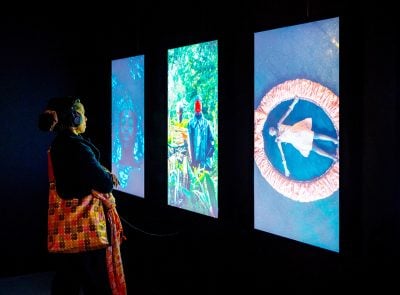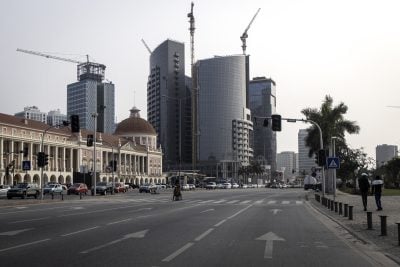Nirmala Nababsing, the Senior Chief Executive of the Ministry of Energy and Public Utilities in Mauritius, tells James Gavin about the island nation’s ambitious plans to develop its power sector.
Mauritius has no indigenous fossil-fuel energy reserves. What is the government’s strategy for ensuring that it keeps capacity ahead of demand?
Mauritius is much concerned about energy security as it is heavily dependent on imported fuels. In its nationally determined contribution, the Government has committed to expand solar, wind and biomass energy production and other renewable energy sources and gradually shift towards the use of cleaner energy technologies, such as liquefied natural gas (LNG), while modernising the grid. The target is to achieve 35% renewable energy by 2030.
This strategy encompasses institutional strengthening, developing the necessary regulatory framework and encouraging investment in renewable energy. A Utility Regulatory Authority (URA) has been set up and is working on licensing of operators and is expected to encourage fair competition in the electricity sector and ensure the sustainability and viability of the utility services.
How is the country progressing from dependence on imported petroleum for electricity generation to developing power from a variety of sources?
We are promoting the use of renewable energy and encouraging investment in solar and wind energy and waste to energy. Some research is also being carried out on ocean energy. By the end of 2018, an additional 94 MW will be available from solar PV, including small-scale distributed generation (SSDG) and medium-scale distributed generation (MSDG). With all the ongoing projects of PV, wind and biomass, by 2020, we expect renewable energy to contribute to about 28% in the electricity mix. Solar energy will constitute 11% of the total renewable energy.
What is your approach for encouraging renewable energy and reducing your dependence on fossil fuels? What progress has been made so far?
Solar is coming on very quickly, and the proportion will increase in coming years through implementation of new projects.
Over the past three years, there has been a surge of solar PV projects, with three new projects already operating, six others in the pipeline.
The Home Solar project was launched in 2017 for the installation of 10,000 rooftop solar panels on the houses of families in the lowest income group. This project was selected by the Abu Dhabi Fund for Development for financing, and was seen as having the potential to significantly transform the lives of people and alleviate poverty by bringing affordable energy to low-income communities. A Green Energy scheme has been launched for SMEs for the installation of 2,000 solar PV plants of 4 MW capacity. The Central Electricity Board has also invited bids for a waste to energy project and is planning to increase the capacity of its Sans Souci hydropower plant.
Do you envisage continued reliance on bagasse (the residue of sugar cane) going forward? Is that an essential part of the Mauritian energy mix?
In 2016, around 22% (663 GWh) of the electricity was generated from renewable sources, mostly bagasse. The sugar industry has been facing many challenges. In order to face up to these challenges, the industry has undergone significant restructuring and focus is now being put on by-products of sugar cane and improved technology to increase efficiency and the use of cane trash for electricity generation.
What reforms have been made to the Mauritius power sector, and what future reform measures are being planned?
Firstly, the URA has been established and is setting up its regulatory structure and licensing system. Secondly, a Mauritius Renewable Energy Agency (Marena) has been set up to encourage renewable energy development, including research and innovation, developing standards and incentive schemes.
Thirdly, a Renewable Energy Master Plan is being finalised for the period 2018–2030. The energy strategy and policy will focus on the development of a smart grid, battery energy storage to regulate the frequency of the grid, energy conservation to allow for a reduction of 12% in electricity use and shifting towards LNG.
How much effort is the Ministry putting into overhauling existing power plants and building new capacity? And what about distribution and transmission networks?
In order to meet with increasing load demand from new customers and provide reliability and quality of supply to the existing customers, the Central Electricity Board (CEB) is investing heavily to upgrade its transmission and distribution infrastructure throughout the country and carry out undergrounding of its cables. The aim of the CEB is to achieve 50% of underground 22 kV and low voltage network by 2025. It has recently completed the redevelopment of the St Louis Power station with modern technology and convertible to LNG in the future.
It is planning to set up two gas turbines rated 35–40 MW each, in open cycle mode to be converted to LNG in the second phase of the project. The CCGT power plant will be rated between 105 and 120 MW on diesel fuel oil (DFO) and 120 to 140 MW on natural gas.
Will independent power projects (IPPs) figure in your plans to develop the sector?
In 2016, IPPs produced around 60.1% of the total electricity generated and the CEB, the remaining 39.9%. Small producers such as households, commercial entities, industries and SMEs are encouraged to join the various schemes, namely SSDG, MSDG and Green Energy for SMEs. In fact, the URA will ensure that the sector is well regulated for fair competition among the IPPs.
What about financing? Is attracting private finance and concessionary funding a priority? And is the recent MoU with Italy on cooperating in renewable energy an important pointer for the future?
The financing situation is very good. Financing is available through commercial banks and most renewable projects are in the commercial banking sector, and financed by local banks. The Agence Française de Développement introduced the SUNREF project, which involves providing local partner banks with longterm loans (green credit lines). These loans can be allocated on favourable terms on the basis of certain criteria (maturity of green financing market, type of investment, target client base).
The scheme also supports green investment financing by assisting banks in project financing and building the capacities of companies to implement strategies for an optimised use of energy and natural resources.
A memorandum of understanding has been signed with Italy, which is providing €2 for promoting renewable energy projects. The modalities and the list of projects are being discussed.
The Green Climate Fund has allocated a grant of $28m to Mauritius to finance strengthening of the grid to accommodate intermittent renewable energy and deploy solar PV in Agaléga. It will also reinforce the capacity of Marena and the URA.
What are your ambitions for the Africa Energy Forum, which Mauritius is hosting? What opportunities can it bring for your country and the region?
The Africa Energy Forum is a great opportunity for Mauritius. In addition to boosting the tourism industry in Mauritius, it will be bringing together political leaders, chief executives, private sector leaders, researchers and international organisations involved in the energy sector. The forum will facilitate partnerships, sharing of knowledge and experience on new technologies and promote investment. It enables investors, decision makers and public bodies to establish linkages.
For Mauritius, the AEF will enable people to get know that Mauritius is investing in LNG and solar, and an opportunity to learn more about the country and how investors can get more involved in helping us implement our projects and strategy.

Nirmala Nababsing, the Senior Chief Executive of the Ministry of Energy and Public Utilities in Mauritius
Want to continue reading? Subscribe today.
You've read all your free articles for this month! Subscribe now to enjoy full access to our content.
Digital Monthly
£8.00 / month
Receive full unlimited access to our articles, opinions, podcasts and more.
Digital Yearly
£70.00 / year
Our best value offer - save £26 and gain access to all of our digital content for an entire year!
 Sign in with Google
Sign in with Google 


